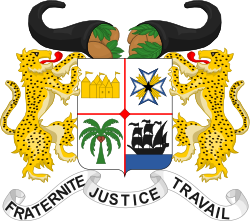 |
|---|
| |
Administrative Council elections were held in Dahomey in 1936. [1]
 |
|---|
| |
Administrative Council elections were held in Dahomey in 1936. [1]
Three members of the Administrative Council were elected from single-member constituencies; Abomey, Ouidah and Porto-Novo. However, the franchise was extremely restricted.
Abomey councillor Richard Johnson opted to contest the Ouidah seat. [1]
In a reversal of the 1934 elections, La Voix candidate Casimir d'Almeida defeated the incumbent Augustin Nicoué in Porto-Novo. [1]
| Constituency | Elected candidate | Losing candidate(s) |
|---|---|---|
| Abomey | Victorin Féliho | |
| Ouidah | Richard Johnson | Ambroise Dossou-Yovo |
| Porto-Novo | Casimir d'Almeida | Augustin Nicoué |